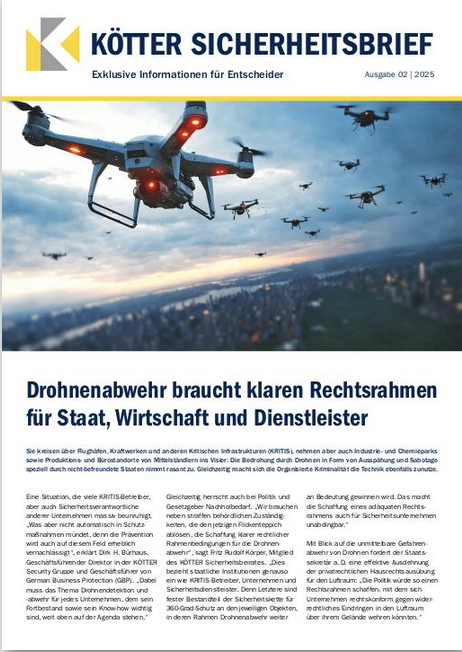The threat posed by drones to critical infrastructure (KRITIS) and businesses continues to grow. Airports, power stations, industrial and chemical parks, and the production and office sites of medium-sized companies are increasingly the focus of surveillance and potential sabotage – both by state actors and organised crime.
As the current article in Kötter Magazine points out, prevention measures have been insufficient to date. Dirk H. Bürhaus, Managing Director of German Business Protection and part of the Kötter Group, emphasises that drone detection and defence must be a top priority for companies that want to protect their know-how and their continued existence.
The legal framework is particularly critical: at present, there is a patchwork of responsibilities and regulations. Fritz Rudolf Körper, member of the Kötter Security Advisory Board, calls for clearly defined regulations that cover not only government authorities but also KRITIS operators, companies and security service providers. Security companies play a central role in the 360-degree protection of facilities, which is why adequate legal requirements for drone defence are urgently needed, also from the perspective of service providers.
Another key concern is the extension of property rights to airspace. This would enable companies to respond to unlawful intrusion in a legally compliant manner and take appropriate countermeasures without entering legal grey areas.
The article makes it clear that technical solutions alone are not enough. Effective drone defence is only possible if prevention, technology and a clear legal framework go hand in hand. The Kötter Group’s magazine offers in-depth insights, practical examples and recommendations for action for security managers in companies and KRITIS.
Recommended reading: Further analyses and strategies for drone defence can be found in the current issue of the Kötter Group’s magazine, which provides experts with valuable practical guidance. Article in KÖTTER Sicherheitsbrief 2/2025


